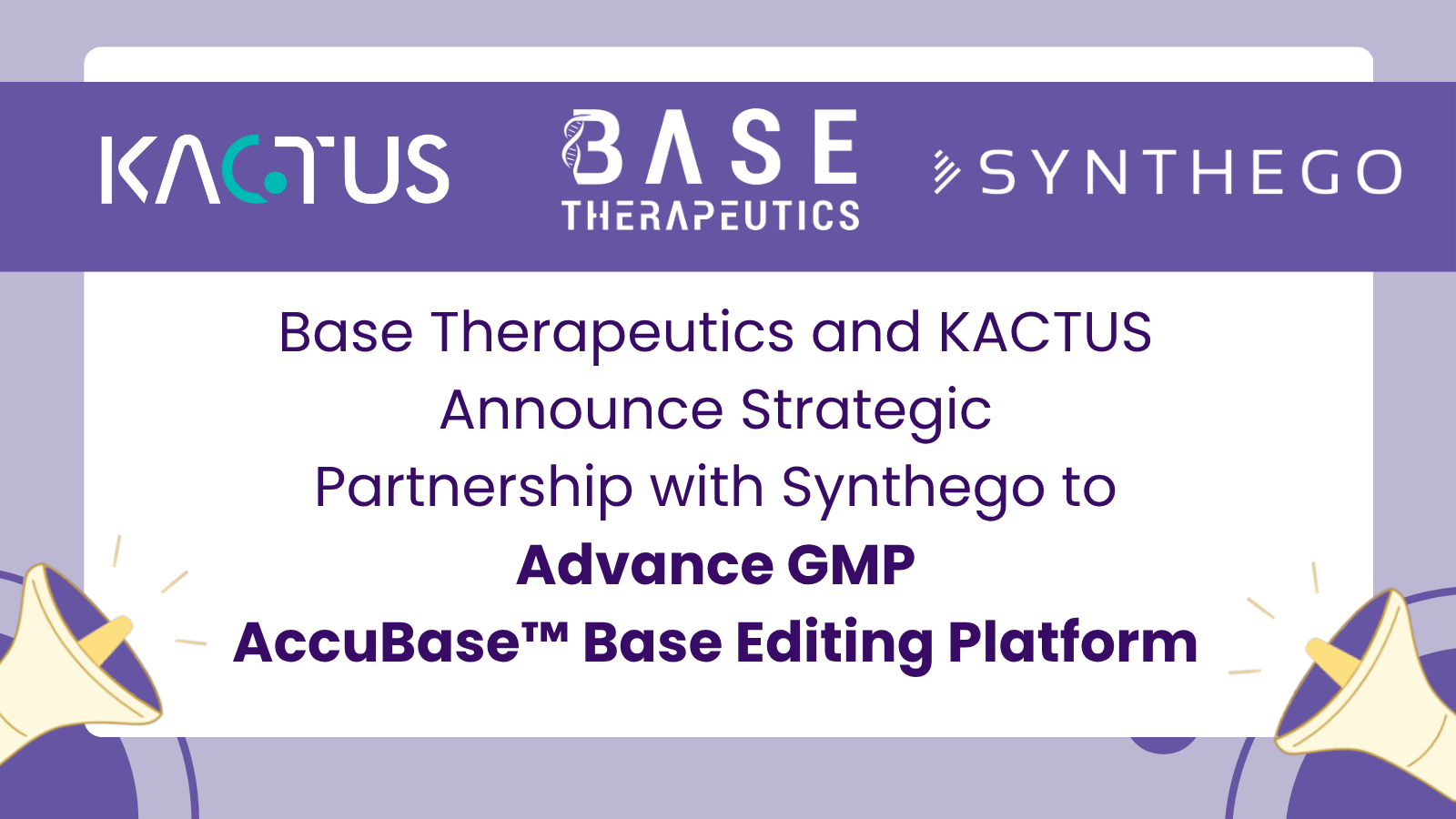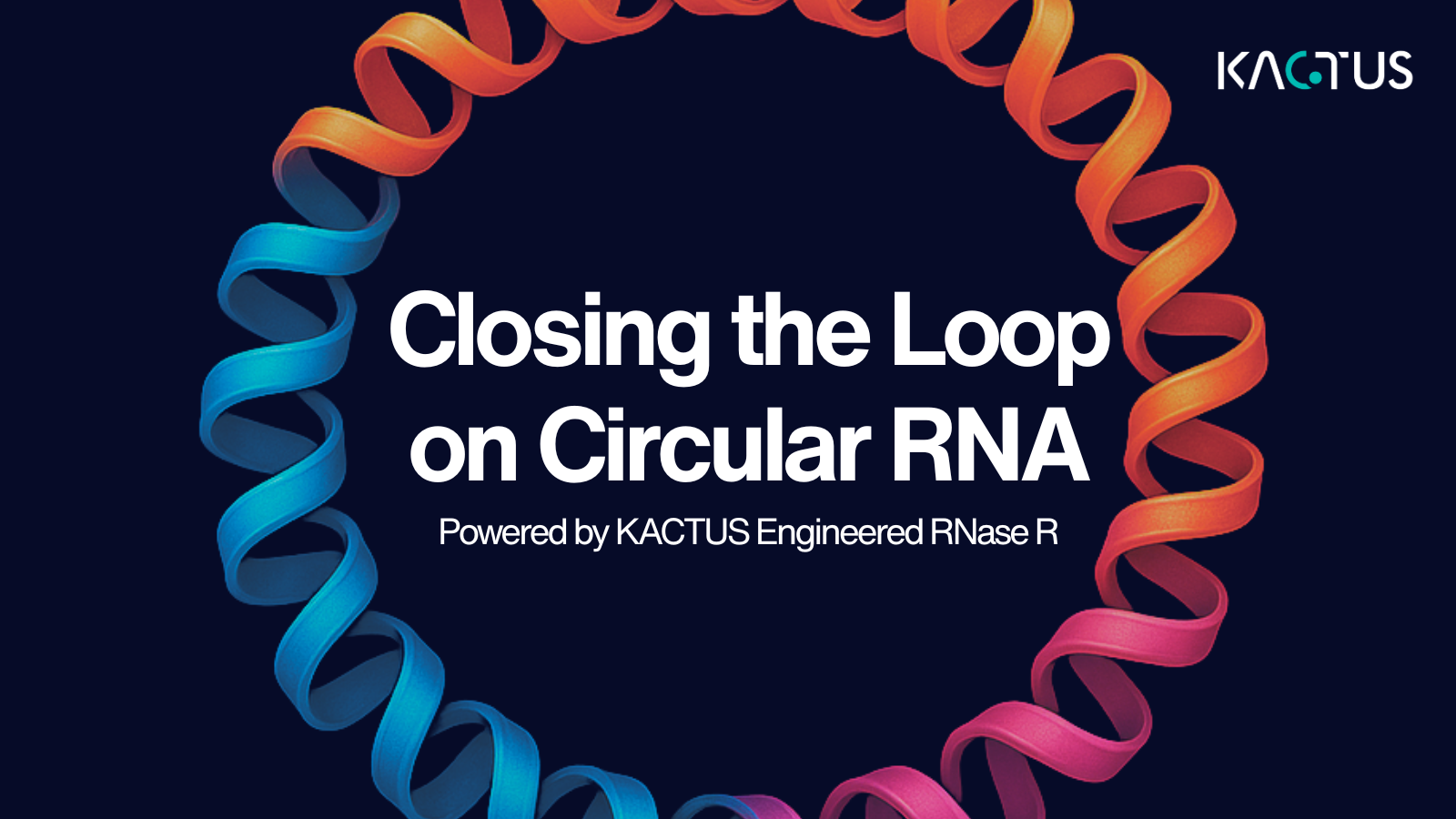Case Study: KACTUS T7 RNA Polymerase Enzyme Demonstrates Superior Performance in Independent Study
By Mallory Griffin
Background
The production of high-quality mRNA is critical for a wide range of applications, including gene therapy, vaccine development, and protein expression. The enzyme T7 RNA polymerase is commonly used to catalyze the synthesis of mRNA from a DNA template. KACTUS has recently developed a series of T7 RNA polymerase enzymes that offer significant advantages over other commercially available enzymes.
In an independent study conducted by Merck. Co, published in Biochemistry, our engineered T7 RNA Polymerase enzymes were compared to T7 RNA Polymerases from other leading vendors. KACTUS T7 RNA Polymerase, tested in mRNA yield, reaction time efficiency, and mRNA integrity, was comparable or superior to the wild-type control and enzymes from leading vendors.
Results
Better Enzyme Kinetics
The KACTUS T7 RNA Polymerase (Enzyme C) and six other commercially available RNAP enzymes (both wild-type and engineered) were analyzed via automated kinetic analysis. The kinetic efficiency of each enzyme was analyzed at 37 and 42 °C. KACTUS’ T7 RNA Polymerase had a significantly higher maximum rate compared to control Enzyme A and the majority of other vendors.

Figure 1. Results of kinetic analysis for wild-type control enzyme ‘A’ and six additional commercially available RNAPs at 37 and 42 °C using unoptimized IVT conditions, including the maximum rate observed across all RNAPs investigated.
Higher Yield in Less Time
Lab-scale experiments using optimized IVT conditions showed that KACTUS T7 RNA Polymerase (Enzyme C) produced the desired amount of mRNA with a 50% reduction in incubation time (1.5 h vs 3 h) with similar purity compared to control Enzyme A.

Figure 2. Results of lab scale validation experiment at 1.5 h under optimized IVT conditions.
Equivalent mRNA Integrity
Under optimized IVT reaction conditions, KACTUS T7 RNA Polymerase (Enzyme C) produced high-purity mRNA at both temperatures comparable to control Enzyme A and other leading vendors.

Figure 3. Capillary electrophoresis was used to analyze mRNA fragmentation in endpoint samples produced by each enzyme in the kinetic study. The bar graph shows the mean fragmentation percentage with its associated error. The calculated error corresponds to the standard deviation across four separate analyses (two analyses for each duplicate sample).
Reduced dsRNA Formation
Under optimized IVT reaction conditions, KACTUS enzymes (C, D, and E) produced less dsRNA than control Enzyme A and other vendors.

Figure 4. Percentage of mRNA that forms dsRNA products as assessed by an enzyme-linked immunosorbent assay (ELISA). The blue and green bars quantify dsRNA production across two replicates at 37oC and 42oC, respectively. Enzymes studied without dsRNA (i.e., Enzyme D, Enzyme E at 42 C, and Enzyme G at 42 C) revealed results below the detection limit of (< 2.8 ng/mL dsRNA).
Second-Generation MaxPure™ T7 RNA Polymerase from KACTUS
Since the launch of our first-generation T7 RNA Polymerase (Enzyme C in the above independent study), we have engineered a superior MaxPure™ T7 RNA Polymerase with an even greater reduction in dsRNA byproduct.
(A)

(B)
|
NTP Each |
7.5mM |
|||||||||||
|
Cap Analog |
1mM |
2mM |
3mM |
4mM |
5mM |
6mM |
||||||
|
|
1st gen T7 |
MaxPure™ T7 |
1st gen T7 |
MaxPure™ T7 |
1st gen T7 |
MaxPure™ T7 |
1st gen T7 |
MaxPure™ T7 |
1st gen T7 |
MaxPure™ T7 |
1st gen T7 |
MaxPure™ T7 |
|
Yield by Nanodrop(mg/ml) |
5.36 |
5.65 |
5.43 |
6.18 |
6.78 |
5.92 |
6.78 |
6.72 |
6.72 |
6.9 |
7.2 |
7.02 |
|
Integrity by QSep(%) |
83.4 |
82.3 |
83.7 |
81.3 |
82.8 |
87.2 |
85.1 |
84.6 |
84.9 |
87.3 |
86.8 |
89.2 |
|
Capping efficiency by LC-MS(%) |
88.24 |
97.94 |
92.73 |
97.75 |
97.83 |
98.44 |
97.52 |
99.39 |
97.95 |
99.67 |
97.94 |
99.82 |
Figure 5 (in-house data). (A) We used our first-generation T7 and second-generation MaxPure™ T7 for co-transcriptional capping on different templates to synthesize mRNA and saRNA of different lengths. After purification by lithium chloride precipitation, the dsRNA content was measured. The results show that MaxPure™ T7 RNA Polymerase can effectively reduce the production of dsRNA. (B) Co-transcriptional capping (each NTP 7.5 mM) was performed using 1st-gen T7 and MaxPure™ T7 to determine whether the capping efficiency was affected at different cap analog concentrations (1 ~ 6 mM). The results show that MaxPure™ T7 RNA Polymerase does not affect yield and integrity at the low cap analog concentration (1 mM), and the capping efficiency of our MaxPure™ T7 was superior to that of our first-generation T7.
Our MaxPure™ T7 RNA Polymerase is manufactured under cGMP conditions and available off-the-shelf. KACTUS supports large-scale production of MaxPure™ T7 for commercial mRNA production.
Conclusion
KACTUS T7 RNA Polymerase enzymes not only enhance the efficiency of mRNA production but also ensure high fidelity and integrity of the synthesized RNA. This case study illustrates our enzymes' ability to meet crucial industrial benchmarks, making them ideal for researchers demanding high-quality RNA for various applications, including vaccine development and gene therapy.
Ordering Information
|
Catalog No. |
Product Name |
Grade |
Generation |
|
GMP-Grade |
Second-Generation |
||
|
Research-Grade |
Second-Generation |
||
|
GMP-Grade |
First-Generation |
References
McMinn, S. E., Miller, D. V., Yur, D., Stone, K., Xu, Y., Vikram, A., Murali, S., Raffaele, J., Holland, D., Wang, S. C., & Smith, J. P. (2024). High-Throughput Algorithmic Optimization of In Vitro Transcription for SARS-CoV-2 mRNA Vaccine Production. Biochemistry, 63(21), 2793–2802. https://doi.org/10.1021/acs.biochem.4c00188












